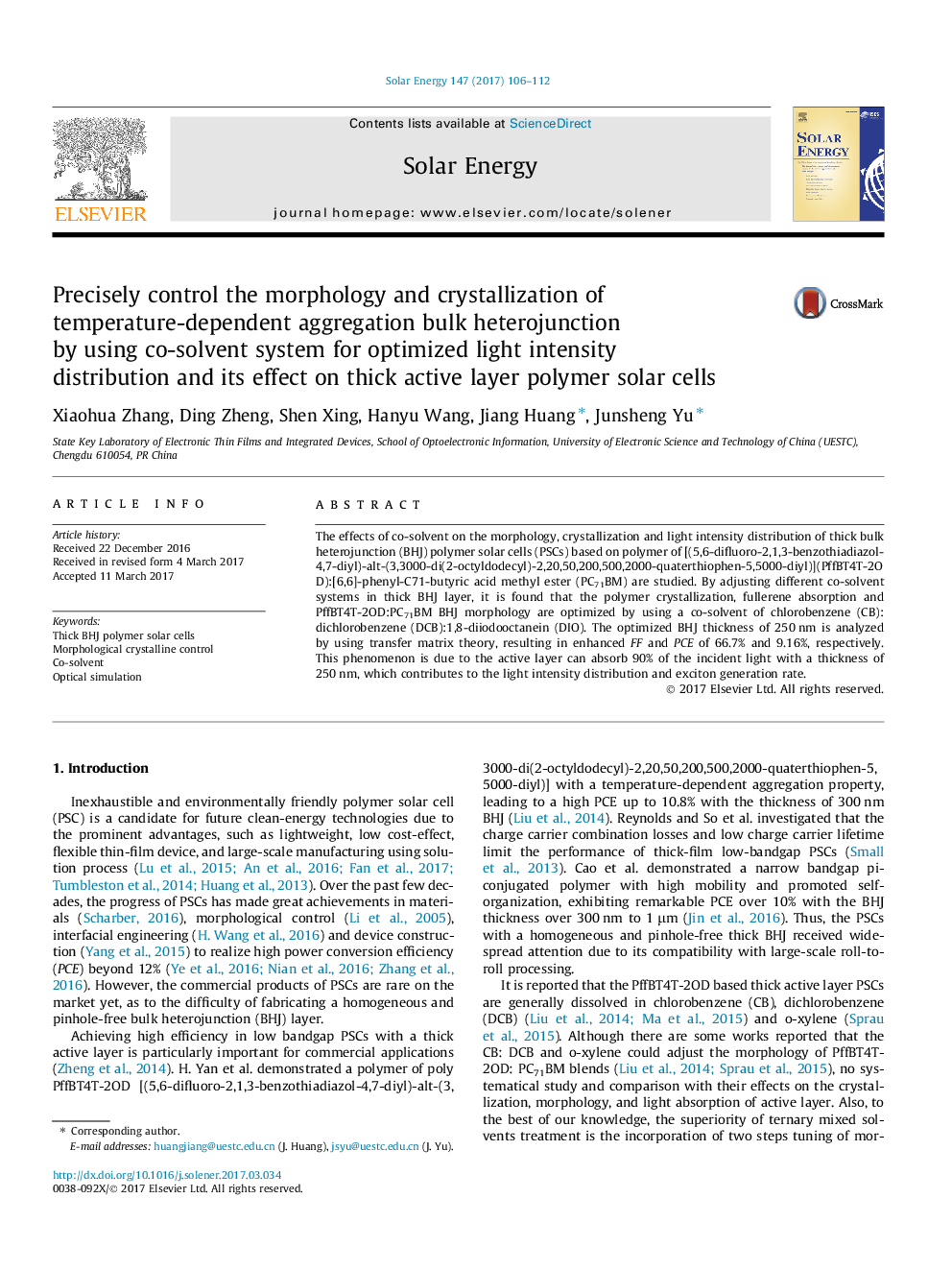| Article ID | Journal | Published Year | Pages | File Type |
|---|---|---|---|---|
| 5451193 | Solar Energy | 2017 | 7 Pages |
Abstract
The effects of co-solvent on the morphology, crystallization and light intensity distribution of thick bulk heterojunction (BHJ) polymer solar cells (PSCs) based on polymer of [(5,6-difluoro-2,1,3-benzothiadiazol-4,7-diyl)-alt-(3,3000-di(2-octyldodecyl)-2,20,50,200,500,2000-quaterthiophen-5,5000-diyl)](PffBT4T-2OD):[6,6]-phenyl-C71-butyric acid methyl ester (PC71BM) are studied. By adjusting different co-solvent systems in thick BHJ layer, it is found that the polymer crystallization, fullerene absorption and PffBT4T-2OD:PC71BM BHJ morphology are optimized by using a co-solvent of chlorobenzene (CB):dichlorobenzene (DCB):1,8-diiodooctanein (DIO). The optimized BHJ thickness of 250Â nm is analyzed by using transfer matrix theory, resulting in enhanced FF and PCE of 66.7% and 9.16%, respectively. This phenomenon is due to the active layer can absorb 90% of the incident light with a thickness of 250Â nm, which contributes to the light intensity distribution and exciton generation rate.
Keywords
Related Topics
Physical Sciences and Engineering
Energy
Renewable Energy, Sustainability and the Environment
Authors
Xiaohua Zhang, Ding Zheng, Shen Xing, Hanyu Wang, Jiang Huang, Junsheng Yu,
